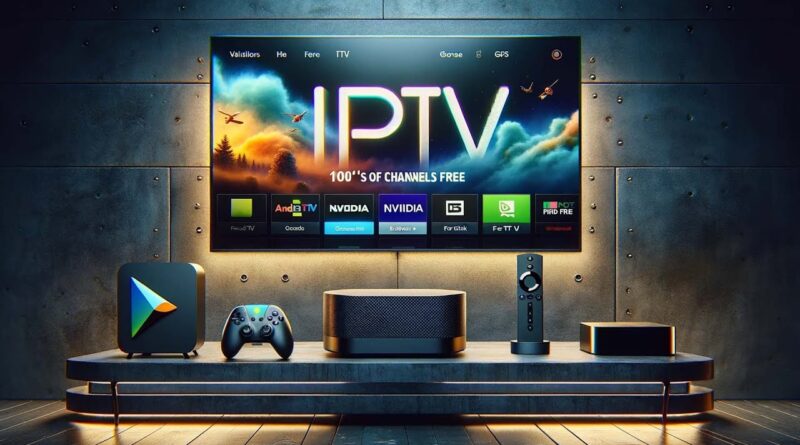The Evolution and Impact of IPTV: A Deep Dive
The world of television has witnessed abonnement iptv significant transformations over the past few decades, from the advent of cable and satellite TV to the rise of streaming platforms. One of the most intriguing developments in this space is IPTV, or Internet Protocol Television, which has redefined how we consume content. As more people shift away from traditional broadcasting methods, IPTV emerges as a crucial player in the digital media landscape.
What is IPTV?
IPTV, or Internet Protocol Television, is a system where television services are delivered using the internet rather than traditional terrestrial, satellite, or cable formats. Instead of receiving content through broadcast signals or satellite dishes, users access television content through their internet connection. This method allows for greater flexibility in viewing options and a more personalized experience for users.
How IPTV Works
At its core, IPTV leverages the same protocol used by the internet—IP (Internet Protocol)—to deliver content. This is how it typically works:
- Content Acquisition: IPTV providers source content from various channels, both live and on-demand. This content is then digitized, if not already in a digital format, and compressed for efficient delivery.
- Content Delivery: Once the content is prepared, it is delivered to users via a managed or dedicated network that ensures high-quality service. This network can be provided by the user’s Internet Service Provider (ISP) or a third-party service provider.
- End-User Interface: On the user’s end, the IPTV service is accessed through a set-top box, smart TV, computer, or mobile device. The interface typically allows users to select channels, browse content, and access features like pause, rewind, or fast-forward, which are not always available with traditional TV formats.
Types of IPTV Services
IPTV can be categorized into several types based on how content is delivered and consumed:
- Live Television: Similar to traditional broadcasting, live television on IPTV streams content in real-time, allowing users to watch events as they happen. However, unlike traditional methods, IPTV can offer enhanced features like interactive content, multiple camera angles, and integrated social media feeds.
- Time-Shifted Media: This allows users to watch broadcasts at their convenience. For instance, users can catch up on programs that were aired days earlier, or even pause and rewind live television.
- Video on Demand (VOD): Perhaps the most popular form of IPTV, VOD services allow users to select and watch videos from a vast library at any time. Netflix and Hulu are examples of VOD services, though they are not strictly IPTV in the traditional sense.
- Near Video on Demand (NVOD): This service is similar to VOD but is designed for high-demand content like movies or sports events. The content is broadcasted on multiple channels at staggered times, allowing users to choose a viewing time that suits them.
Advantages of IPTV
IPTV offers several advantages over traditional television formats, making it an attractive option for modern consumers:
- Flexibility: IPTV’s ability to stream content over the internet means users can watch television on various devices, from smartphones to smart TVs. This flexibility allows for a more personalized viewing experience.
- Interactivity: IPTV can offer interactive features that are impossible with traditional TV. Users can participate in polls, choose camera angles, or access additional information about what they are watching.
- Cost-Effectiveness: IPTV can be more affordable than traditional cable or satellite services, especially when bundled with internet services. Additionally, users can often choose packages that suit their specific needs, avoiding the cost of unwanted channels.
- High-Quality Content: Because IPTV uses a managed network, it often provides a higher quality of service than internet streaming platforms that rely on the public internet, which can be prone to buffering and quality degradation.
Challenges Facing IPTV
Despite its many advantages, IPTV is not without its challenges:
- Bandwidth Requirements: IPTV requires a robust and reliable internet connection. In areas with poor internet infrastructure, this can be a significant barrier to adoption.
- Content Licensing: Securing the rights to broadcast certain content can be a complex and costly process. This challenge can limit the variety of content available on some IPTV services.
- Piracy: The digital nature of IPTV makes it susceptible to piracy. Unauthorized IPTV services offering pirated content at low prices have proliferated, creating challenges for legitimate service providers.
- Regulation: The regulatory environment for IPTV is still evolving. Depending on the region, there can be significant legal hurdles related to content delivery, user privacy, and network neutrality.
The Future of IPTV
As internet infrastructure continues to improve globally and consumer demand for on-demand and flexible viewing options grows, IPTV is poised to become an even more integral part of the media landscape. The convergence of IPTV with other technologies, such as 5G, cloud computing, and artificial intelligence, could lead to even more innovative and personalized viewing experiences.
Moreover, as IPTV services continue to expand their content libraries and improve user interfaces, they will likely attract more subscribers who are looking for an alternative to traditional cable and satellite services. The integration of social features, personalized recommendations, and interactive content could further enhance the appeal of IPTV.
Conclusion
IPTV represents a significant shift in how television content is delivered and consumed. Its flexibility, interactivity, and cost-effectiveness make it a compelling option for modern viewers, while its reliance on internet infrastructure presents both opportunities and challenges. As technology continues to evolve, IPTV is likely to play an increasingly central role in the way we experience television, offering a glimpse into the future of media consumption.

